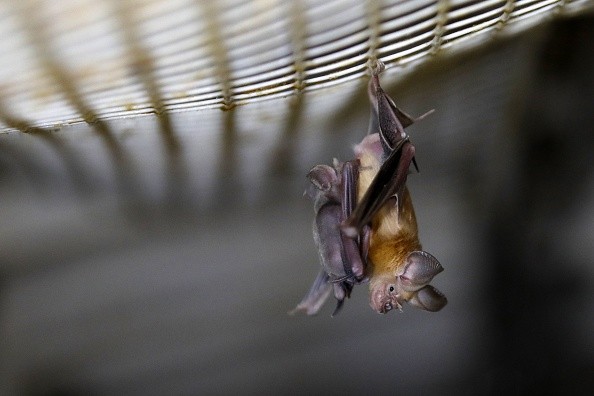A severely endangered species of bats that had not been seen in 40 years has been discovered in Rwanda, thrilling environmentalists who had believed it was already gone.
However, the Hill's horseshoe bat was still alive in Rwanda's Nyungwe forest a deep rainforest according to the collaboration behind the finding.
There was no information on the animals' population, and the International Union for Conservation of Nature (IUCN) categorized them as severely endangered in 2021.
Horseshoe bat finally appeared around Rwanda

According to Dailymail, the first-ever recording of the species' echolocation called a technique the animals employ to locate the location of things through reflected sound has been shown in the new audio video.
Hill's horseshoe bat possesses 'exaggerated' and 'comical' facial traits, such as enormous ears and a horseshoe-shaped snout wrapped in loose flaps of skin.
The mystery species, which is indigenous to Rwanda, are likely to roost in tropical forest caves or abandoned mining tunnels.
Rediscovering the extinct species was fantastic, according to Jon Flanders, director of Bat Conservation International (BCI), in a statement issued late Tuesday.
It's incredible to believe that they're the first ones to witness this bat in such a long time, as per The Guardian.
Beginning in 2013, the Texas-based non-profit collaborated with the Rwanda Development Board and the Rwanda Wildlife Conservation Association to perform jungle surveys.
The bat was discovered in 2019 following a 10-day journey combing the tunnels of the forest.
They recognized right away that the bat we had captured was rare and outstanding, according to BCI's principal scientist, Winifred Frick.
It is insectivorous, like other horseshoe bat species, although its specific diet and foraging behaviors are unclear, according to specialists.
According to Flanders, they were concerned that the species had already become extinct when they embarked on this research.
The discovery of Hill's horseshoe bat was wonderful; it's astounding to believe that we're the first ones to witness this bat in such a long time.
The crew was also able to collect new information on the species, which will make it simpler to discover in the future.
They also captured the first-ever echolocation cries made by Hill's horseshoe bat while hunting for insects.
For hunting and navigation, bats, whales, dolphins, and other creatures employ echolocation, which detects objects based on reflected sound waves that they create.
The creatures of the night have long been vilified as fanged monsters or disease vectors, and the coronavirus epidemic has done little to change that perception, with experts claiming that Covid-19 most likely originated among the animals.
Bats account for one-fifth of all mammal species, ranging from the two-gram "bumblebee bat" to the 1.5m (5ft) wingspan of the huge Philippine flying fox.
The bats' conservation status
The IUCN Red List is an important measure of the global biodiversity's health. It is far more than a list of species and their condition; it is a powerful instrument for informing and catalyzing action for biodiversity conservation and policy change, both of which are vital to safeguarding the natural resources we require to thrive. It contains data on distribution, population size, habitat and ecology, usage and/or trade, threats, and conservation efforts to help influence conservation choices.
Because there was no information on these creatures' population, the International Union for Conservation of Nature (IUCN) categorized them as critically endangered in 2021.
Human activities, such as deforestation and habitat loss, are to blame.
For the researchers in Rwanda, the enigmatic finding heralds the start of a new race to preserve the once-extinct species from extinction.
© 2025 NatureWorldNews.com All rights reserved. Do not reproduce without permission.





